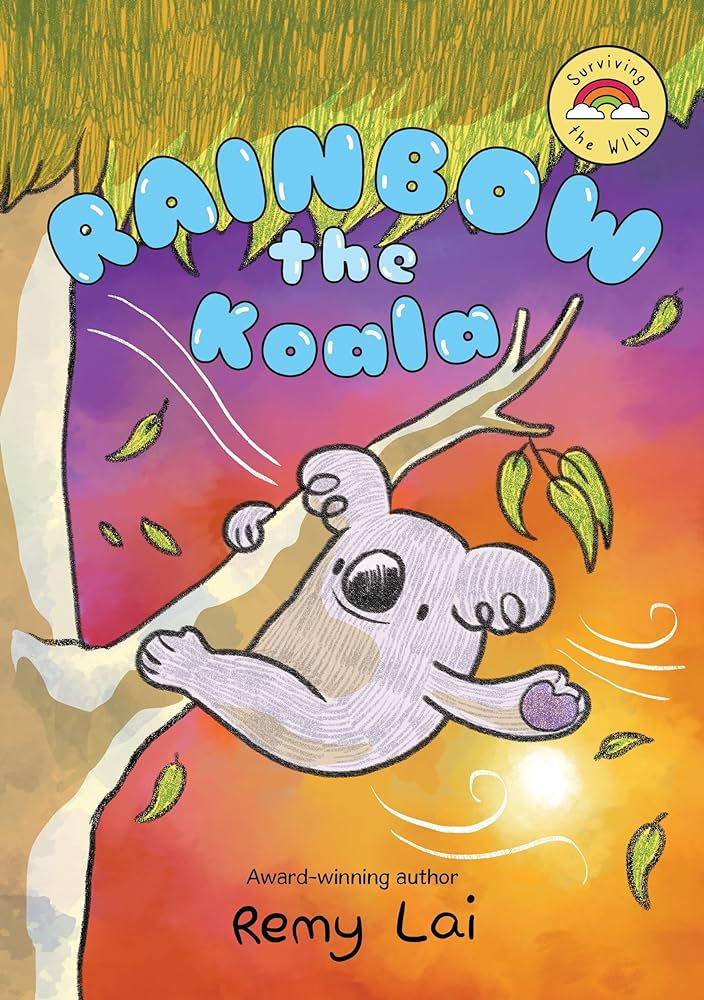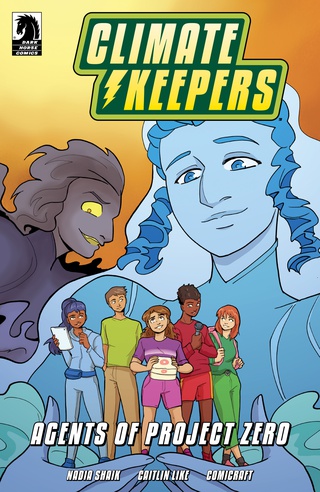“Humans only care about cute and fuzzy vegetarian bats. They want to feed them and travel to see them and take pictures of them. All they wanted to do when they saw me was shoo me away” — Little Brown Bat, Bats: Learning to Fly, p. 60.
| Creator(s) | Falynn Koch (author) |
| Publisher | First Second |
| Publication Date | 2017 |
| Genre | Educational, Nonfiction |
| Environmental Themes and Issues | Animal Captivity, Animals in Danger, Animal Rescue, Conservation, Deforestation, Educational Nature Facts, Environmental Activism, Habitat Destruction, Pesticide, Tourism |
| Protagonist’s Identity | Little Brown Bat: A male Myotis lucifugus |
| Protagonist’s Level of Environmental Agency | Level 4: Considerable Environmental Agency without Activism |
| Target Audience | Middle Grade (8 to 12 years) |
| Settings | Southwestern USA |
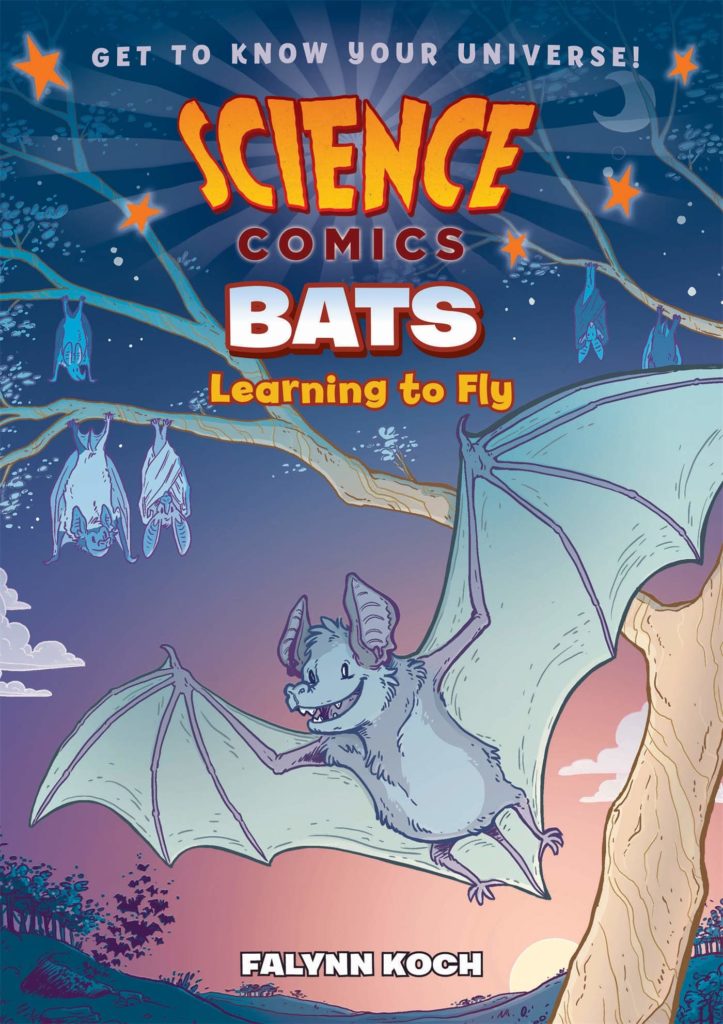
Environmental Themes
Bats: Learning to Fly is published as part of the Science Comics series. Each volume of this graphic nonfiction series was created by different authors/illustrators and provides a detailed, scientific introduction to a specific topic, such as coral reefs or trees. Bats is narrated by Little Brown Bat, a male member of the Myotis lucifugus species. The comic begins as Little Brown Bat gets lost in the desert in a national park. He flies around a group of tourists as a park ranger takes them on an educational nighttime hike. As he tries to catch bugs, he flies close to the humans, a man panics and hits him, breaking his wing. The park ranger rescues Little Brown Bat and transports him to a wild animal hospital, where Rebecca, a veterinarian repairs his wing.
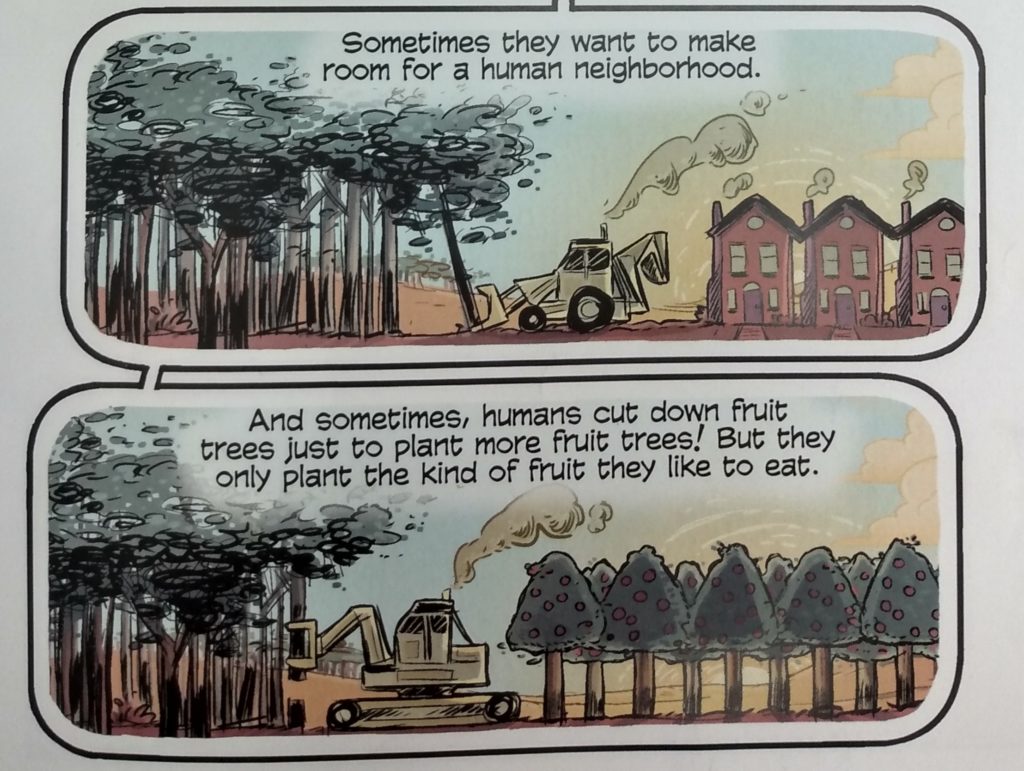
As Little Brown Bat heals at the hospital, he encounters different species of bats from across the world. The bat patients tell Little Brown Bat about the circumstances that brought them to the hospital, and many of their stories involve harmful human actions. For instance, Gray Bat was attacked by a cat–potentially an outdoor pet–and suffers permanent damage to his wings. A fishing bat gets woken up from hibernation by human hikers and collapses in the cold. Similarly, a fruit bat from Australia was accidentally transported to America after humans destroyed his habitat. These anecdotes teach readers about a broad range of human-created threats to bats and dispel popular myths about the misunderstood creatures, such as beliefs that all bats drink blood or that they should be eradicated to prevent the spread of disease.
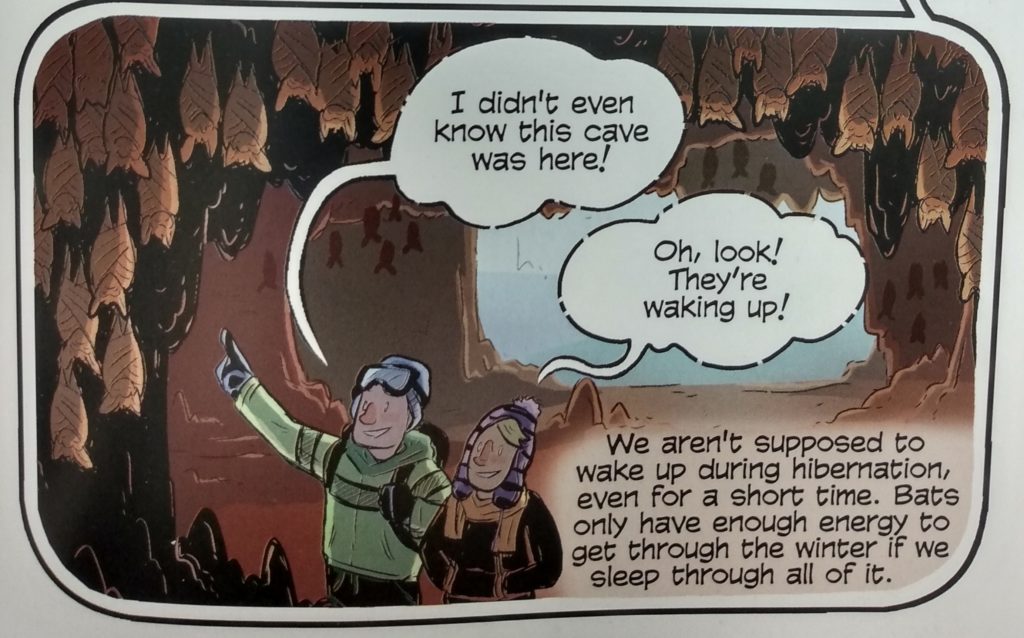
Alongside the bats’ personal narratives, the comic includes accompanying dialogue, diagrams, and textual captions that convey educational information about the various bat species and detail different aspects of bat behavior and biology, such as echolocation and nighttime pollination. Additionally, the comic highlights the conservation efforts of humans like Merlin Tuttle, the founder of Bat Conservation International. The narrative concludes with Rebecca releasing the healed Little Brown Bat back into the wild at a farm, where he will eat pests that consume the farmer’s crops. A diagram instructs readers about how to make a bat box like the wooden roost that the farmer builds to house Rebecca’s former patients.
Paratexts
The comic includes a one-page foreword written by Rob Mies, the founder of the Organization for Bat Conservation. Mies highlights the importance of bats for human agriculture and encourages readers to take steps to help preserve the animals, such as avoiding using pesticides, joining the Save the Bats Campaign (savethebats.org), gardening with plants that attract bugs for plants to eat, putting up bat houses in backyards. Mies concludes, “Tell everyone you know–your family, friends, and teachers–that we all need to do what we can to keep bats healthy. And next time it’s dark out, don’t be afraid–think about all the bats busy at work, keeping us–and our food–healthy” (Foreword).
The comic’s backmatter includes a bibliography with additional resources about bats, a diagram of bat anatomy, a glossary of terms related to bats, a guide to installing bat boxes at home, and a list of careers that readers can purse to help bats.


